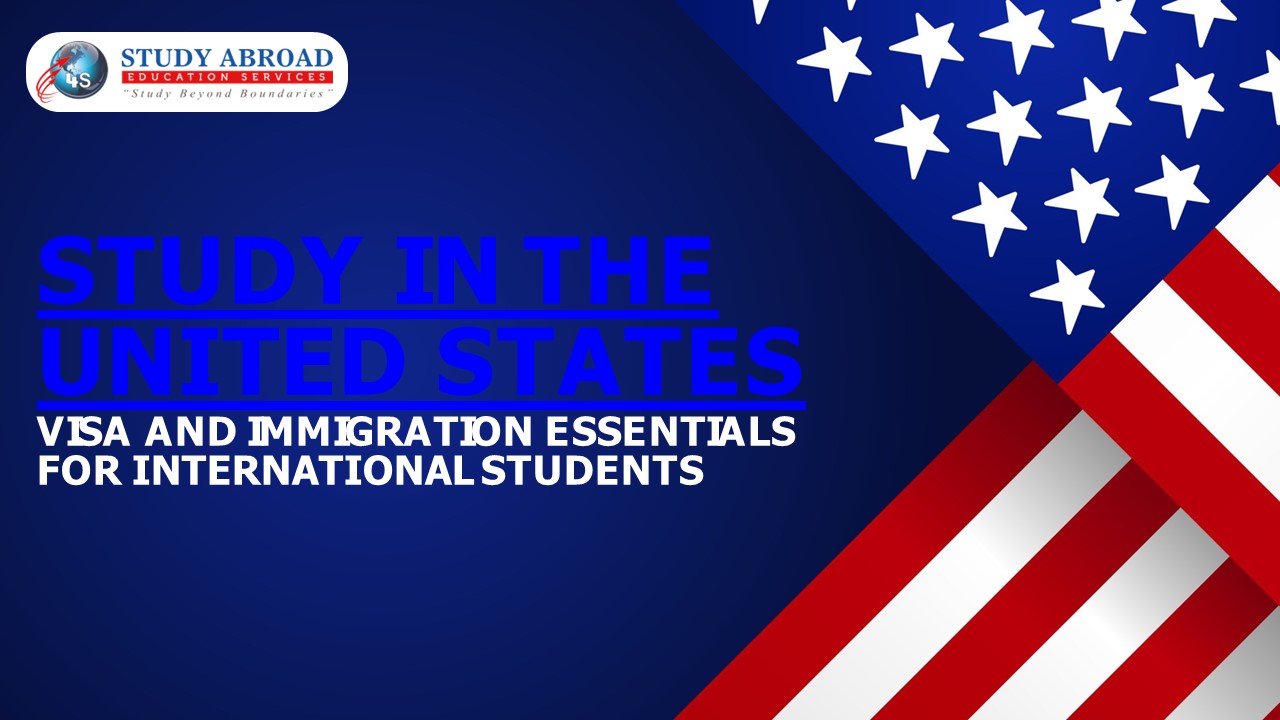Getting To The U.S.: Visa and Immigration Essentials - PowerPoint PPT Presentation
Title:
Getting To The U.S.: Visa and Immigration Essentials
Description:
Are you considering pursuing your higher education in the United States? Our comprehensive guide, "Study In United States: Visa & Immigration Guide for International Students," offers invaluable insights to help you navigate the U.S. student visa and immigration process smoothly. Learn about visa requirements, application procedures, and essential tips for a successful study journey. Whether you're planning to study in the U.S. or seeking assistance from overseas education consultants in UAE, this guide is your essential resource to make your dream of studying in the United States a reality. – PowerPoint PPT presentation
Number of Views:4
Title: Getting To The U.S.: Visa and Immigration Essentials
1
STUDY IN THE UNITED STATES
VISA AND IMMIGRATION ESSENTIALS FOR
INTERNATIONAL STUDENTS
2
INTRODUCTION
Welcome to the informative presentation on study
in the United States Visa and Immigration
Essentials for International Students. Studying
abroad can be a life-changing experience, and
the United States offers numerous educational
opportunities. In this presentation, we will
guide you through the visa and immigration
process for international students.
3
BENEFITS OF STUDYING ABROAD IN THE UNITED STATES
Studying abroad offers a chance for personal
growth, cultural exposure, and a world-class
education. The United States is home to renowned
universities and diverse cultures. Gaining a U.S.
education enhances your career prospects
globally.
01.
4
CHOOSING A U.S. INSTITUTION
Research universities and programs to find the
best fit for your academic and career
goals. Ensure your chosen institution is
SEVP-certified for international student
enrollment. Reach out to admission offices for
application details.
02.
5
VISA TYPES
F-1 Student Visa Most common for full-time
students. J-1 Exchange Visitor Visa For
exchange programs. M-1 Student Visa For
vocational or non-academic programs. Choose the
visa type that matches your course of study.
03.
6
THE I-20 FORM
The I-20 is a crucial document for F-1 and M-1
visa applicants. Issued by your U.S. school, it
outlines program details, duration, and
financial information. Pay the SEVIS fee and
schedule a visa interview after receiving your
I-20.
1
2
3
04.
7
FINANCIAL PROOF
- U.S. visa officers require evidence of your
ability to cover tuition and living expenses. - Bank statements, affidavits of support, and
scholarship letters are examples of acceptable
financial proof. - Ensure you have sufficient funds to support your
studies.
05.
8
VISA INTERVIEW TIPS
Dress professionally and arrive early. Be
prepared to explain your study plans and ties to
your home country. Speak confidently and
truthfully. Don't forget to bring your I-20,
passport, visa fee receipt, and other required
documents.
1
2
3 4
06.
9
VISA APPLICATION PROCESS
Complete the DS-160 form online.
1
Pay the non-refundable visa application
fee. Schedule a visa interview at your nearest
U.S. Embassy or Consulate. Attend the interview
with all required documents.
2
3
4
07.
10
SEVIS FEE
SEVIS (Student and Exchange Visitor Information
System) fee is mandatory. Pay the fee online
before your visa interview. Keep the payment
receipt as proof.
08.
11
POST-ARRIVAL RESPONSIBILITIES
- Arrive in the U.S. no more than 30 days before
your program start date. - Report to your designated school official (DSO)
within 10 days of arrival. - Maintain full-time enrollment and keep your
immigration documents updated.
09.
12
THE I-20 FORMEMPLOYMENT OPPORTUNITIES
F-1 students can work on-campus during their
first academic year. Optional Practical Training
(OPT) and Curricular Practical Training (CPT)
provide off-campus work opportunities. Consult
your DSO for employment options.
1
2
3
13
TRAVELING ABROAD AND REENTRY
Plan international travel carefully. Ensure your
passport and visa are valid. Carry your I-20
with a valid travel signature when leaving the
U.S. Reentry may require a new visa stamp, so
check visa requirements before traveling.
1 2
3
4
14
CONCLUSION
Studying in the United States can be a
transformative experience. Understanding the visa
and immigration process is essential for a
successful journey. For personalized guidance,
consult your school's international student
office and stay informed about any policy
changes.
12.
15
THANK YOU
F O R J O I N I N G U S T O D A Y , A N D W E W I
S H Y O U T H E B E S T O F L U C K O N Y O U
R J O U R N E Y T O S T U D Y A B R O A D I
N T H E U N I T E D S T A T E S ! 97156
4468253 www.4sstudyabroad.com































